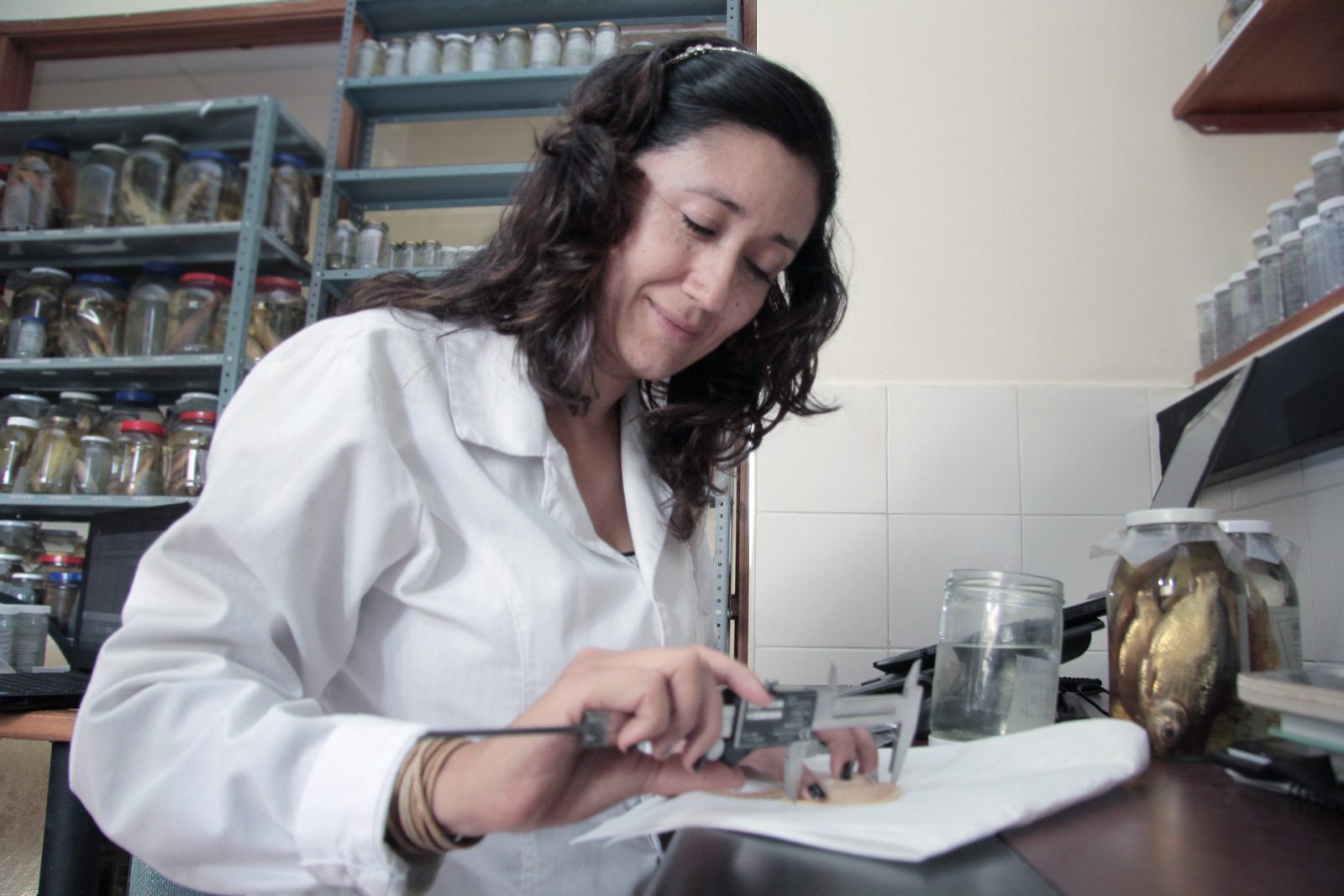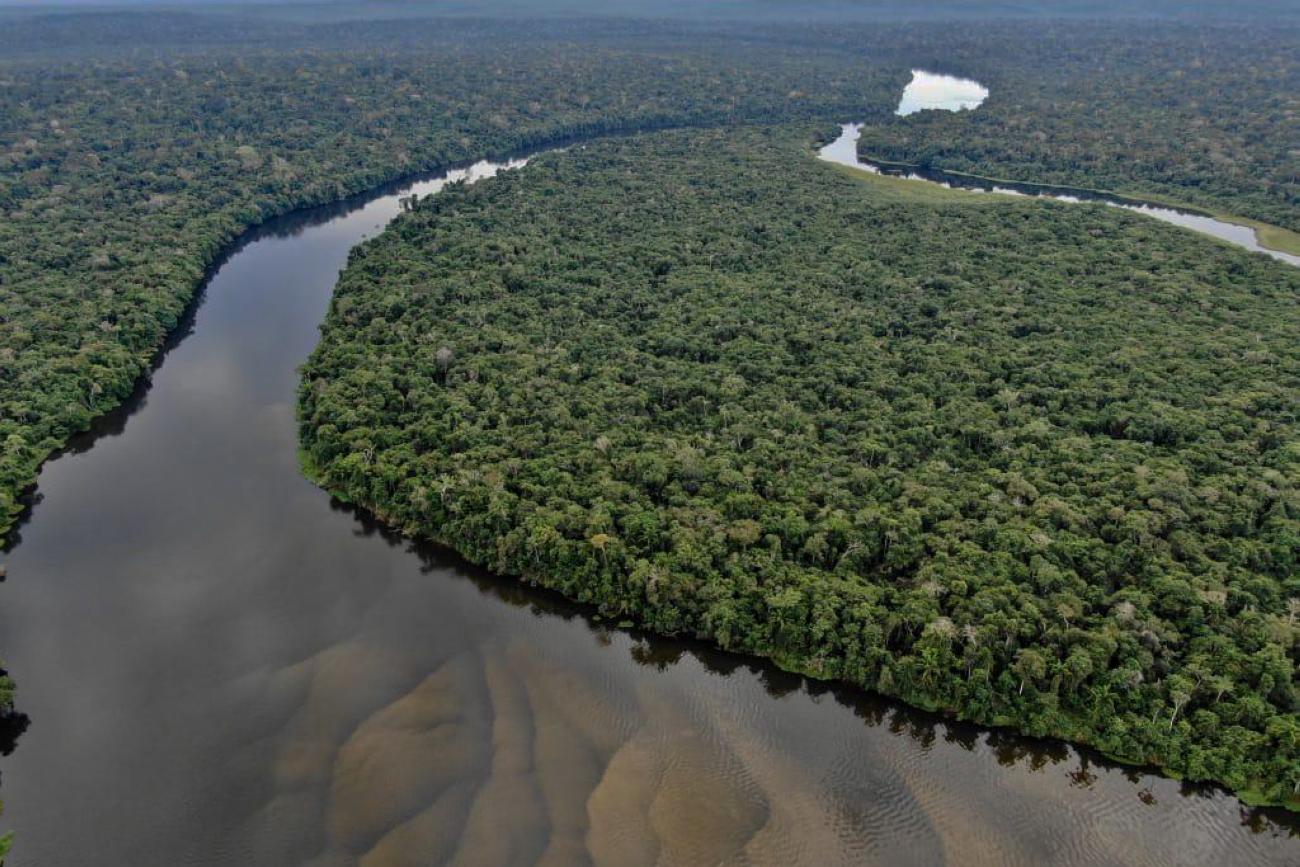Considering the threat situation of freshwater stingrays, CIACOL elaborated a descriptive booklet for the species present in Colombia in 2020.
The diversity of fish in the Amazon region of Colombia is the highest in the country, where at least 751 species cohabit, of which 42% are of interest in the ornamental market and 12% in national consumption. This figure is underestimated because it does not include species that are part of the diet of local inhabitants.
The Ichthyological Collection of the Colombian Amazon – CIACOL is a resource that accounts for this biodiversity. Thus, the work of CIACOL contributes to research, dissemination and disclosure of this natural resource, from the description of species, expansion of geographical distribution ranges and valuation of use within the local context, among others. As of today, the collection has 34,378 specimens taxonomically organized in 12 orders, 49 families, 290 genera and 660 species; it is located in Leticia in the department of Amazonas and can be consulted online through the link: sinchi.org.co/ciacol
In order to strengthen the production of information to support decision making on biodiversity, the Regional Project for the management, monitoring and control of species of wild fauna and flora threatened by trade, implemented by the Permanent Secretariat of the Amazon Cooperation Treaty Organization (PS/ACTO) supports the strengthening of biological collections deposited at the Sinchi Institute by financing the adaptation of infrastructure of new storage spaces for plant collections (Herbal COAH) in Bogota and herpetological and ichthyological collections in Leticia.
A total of 189 pieces of equipment were acquired by the PS/ACTO for the SINCHI Institute, including electric generators, air conditioners and dehumidifiers, a solar panel system, refrigeration equipment, computer equipment, camera traps, photo studio booth, field equipment for fauna (GPS, binoculars, mist nets, dissection accessories, among others) and laboratory equipment, for an approximate amount of USD 250,000.00.
What are CITES species?
CITES or the Convention on International Trade in Endangered Species of Wild Fauna and Flora is a measure that seeks to regulate the excessive exploitation of species due to international trade and for this purpose groups them into three appendices according to the degree of threat to each one of them.
In 2016, the CITES secretariat approved and notified the request made by Colombia to include several species of rays in Appendix III: Paratrygon aiereba, Potamotrygon constellata, P. magdalenae, P. motoro, P. orbignyi, P. schroederi, P. scobina and P. yepezi, species that joined the pirarucú (Arapaima gigas), which is included in appendix II since 1975, since it is a native species of the Amazon basin highly appreciated in the regional and national consumption.
CITES Appendix II includes threatened species whose populations have been greatly reduced, although they are not in danger of extinction. Appendix III includes species that are threatened in at least one country (and even in danger of extinction at the local level), which is why the parties to the treaty have been asked to help control their commercialization.
River rays: endangered species
Considering the threat situation of freshwater stingrays, CIACOL prepared a descriptive booklet for the species present in Colombia in 2020, entitled “Rayas de río” (Acosta-Santos and Agudelo 2020), so that it can become an illustrated tool that allows the rapid identification of the species, based on the observation of distinctive conditions of each one of them, such as coloration patterns, shape and size of the tail and eyes.
Do you want to know more about the Colombian Amazon Ichthyological Collection – CIACOL? Visit: sinchi.org.co/ciacol
About the Amazonian Institute for Scientific Research SINCHI
The SINCHI Institute is a high-level scientific and technological research entity, committed to the generation of knowledge, innovation and technology transfer and the dissemination of information on the biological, social and ecological reality of the Colombian Amazon region, satisfying the needs and expectations of the communities of the region in a timely manner, for which we have committed human talent. More information: www.sinchi.org.co
Published in the Bioamazon Newsletter, issue n. 10, July-August 2021.
====================================================================



